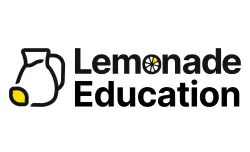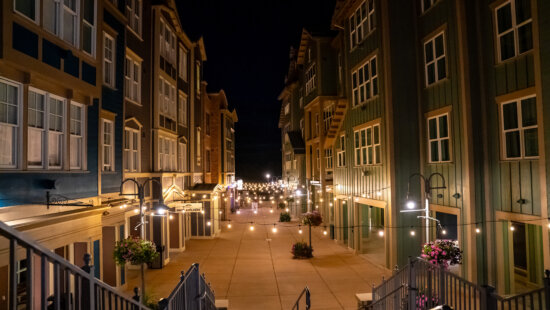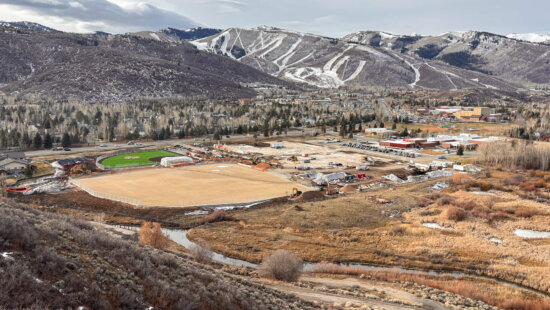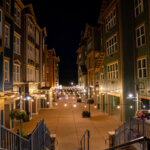Arts & Entertainment
Park City artist exposes AI beauty filters in ‘Facetune Portraits’
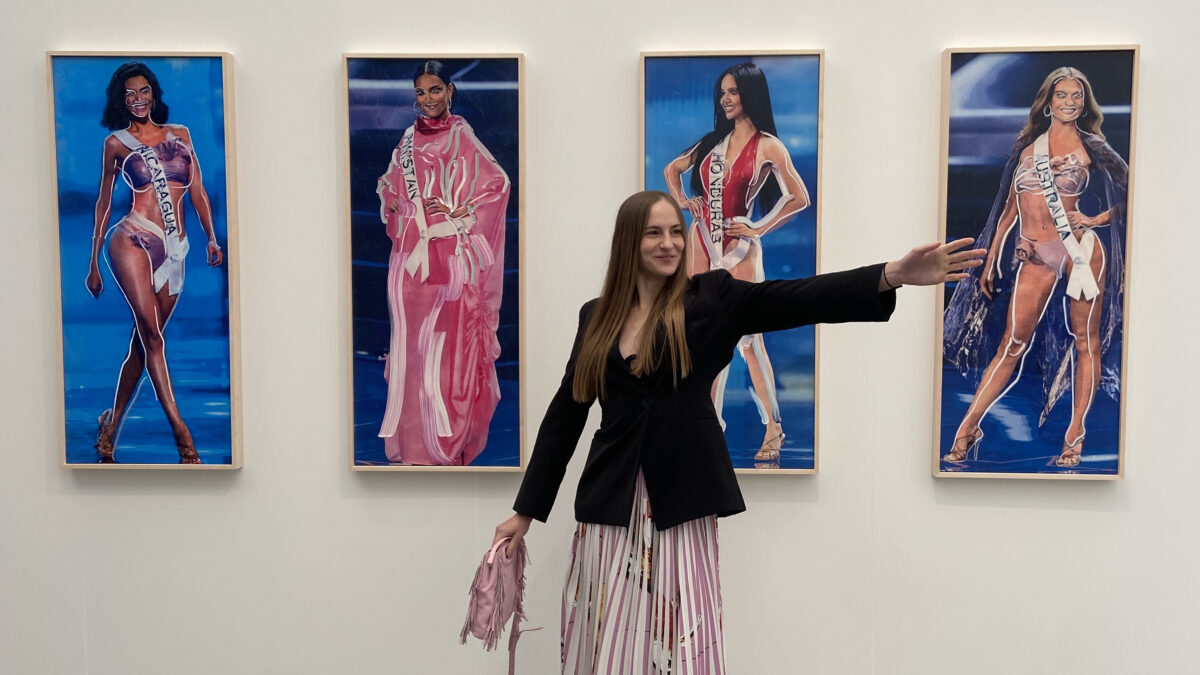
Gretchen Andrew's with her work, “Facetune Portraits,” each canvas revealing bold brushstrokes that lay bare beauty-filter edits. Photo: Gretchen Andrew
PARK CITY, Utah — Park City–based artist Gretchen Andrew is turning smartphone beauty filters inside-out and onto canvas, exposing the algorithmic edits that quietly shape millions of selfies.
Andrew, 37, runs portraits through the Facetune and Body Tune apps, then pushes the “enhance” button that slims waists, widens eyes and plumps lips in seconds. Instead of posting the results, she prints the untouched photo in oil paint, lays it on a white underpainting and lets a plotter robot redraw every change the software demands.
“It creates these really messy marks instead of hiding what’s going on,” Andrew said in a recent interview from New York, where she is preparing for an exhibition. “I wanted to find a wide-open door into conversations about technology, beauty and power.”
The series, titled “Facetune Portraits,” hinges on that tension. “There’s how we actually look, and then there’s how AI is telling us we should look,” she said. “Even when we’re trying to represent ourselves authentically online, our relationship to technology is messy.”
Tech roots, artistic rebellion
Raised in New Hampshire, Andrew ran track at Boston College and joined Google in 2010. The job, once her “dream,” left her restless, so she left to pursue a career in art. “I believed so much in technology that I was going to use it to become an artist,” she said. YouTube tutorials and online Museum of Modern Art courses became her art school; apprenticeships in London and Los Angeles added classical rigor.
Silicon Valley, she said, still informs her work. “Those companies were manipulating attention and consolidating power. I wanted to stay with technology, but in a way that was creative—something that questioned the system instead of serving it.”
Today, a one-of-a-kind oil-paint printer outside New York City translates digital files into physical pigment. From there, the robot goes to work. “The algorithm decides what the ‘ideal’ body should be,” Andrew said. “I decide speed, pressure, which brush. I feel like a conductor—setting the tempo, shaping the sound—even though I never touch the canvas.”
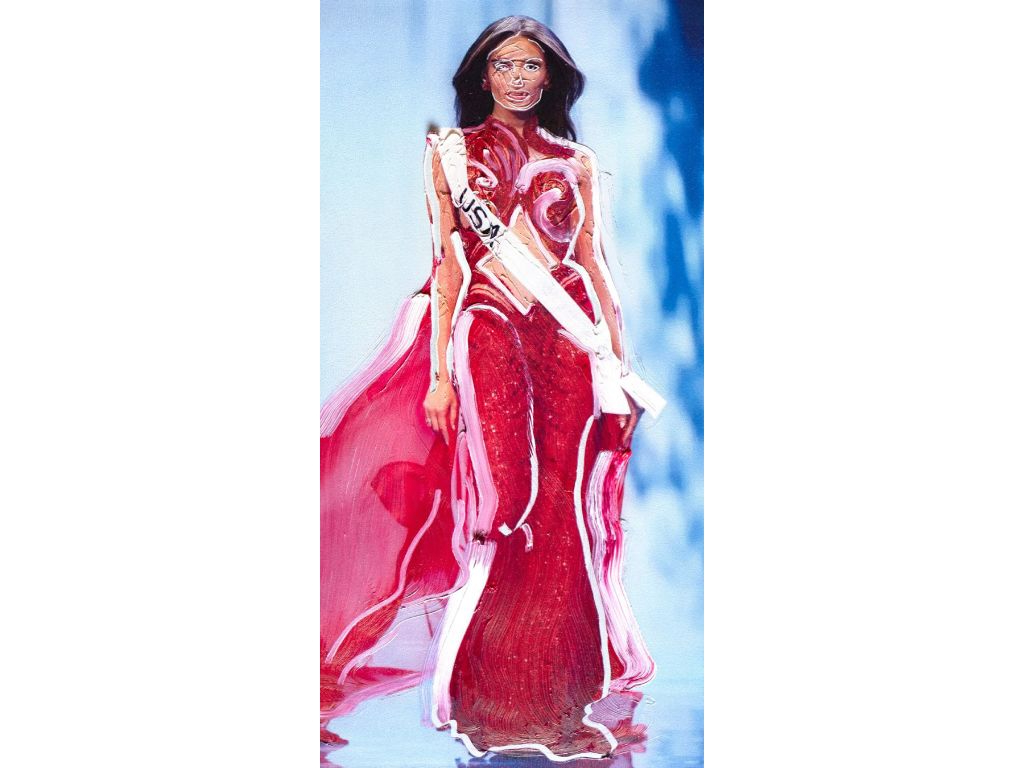
Parents take notice
Gallery visitors often linger in front of the jagged overlays. One father in London told Andrew he’d caught his 9-year-old using a beauty filter. “Kids are literally seeing images that are impossible,” she said. “They don’t exist outside the digital world, and that has real consequences for how we see ourselves.”
Andrew’s continued, “This isn’t just a teenage-girl-on-TikTok problem. There’s a men’s app called Manly—stronger jaws, abs. The pressure is on everyone.”
Finding perspective in Park City
Andrew moved to Park City in May 2020. Trail runs and the scent of sagebrush balance long stretches in big cities. “People say, ‘Come for the winter, stay for the summer.’ I was the reverse,” she said, laughing. “I lived here two winters before I ever skied. Now I can’t imagine what I was thinking.”
She values the town’s mix of ages. “I have neighbors pushing 100 who are more active than people half their age,” she said. “And the airport’s so close—I pop out of the car, breathe that mountain air and feel reset.”
Utah’s well-documented appetite for cosmetic surgery also fuels the work. “There’s a very narrow idea of beauty in parts of this culture,” she said. “The data around plastic surgery here is jaw-dropping. I want to hold that up to the light.”
What’s next
Andrew is expanding Facetune Portraits to include male and nonbinary subjects, but says the first audience will remain close to home. “It’s always special to let friends and neighbors see the work before it flies off around the world,” she said. “Park City lets me unplug from tech and the art scene, and sharing a preview here closes the circle.”
Until then, she will keep orchestrating the clash between natural faces and algorithmic ideals—one rough, undeniable brushstroke at a time.














